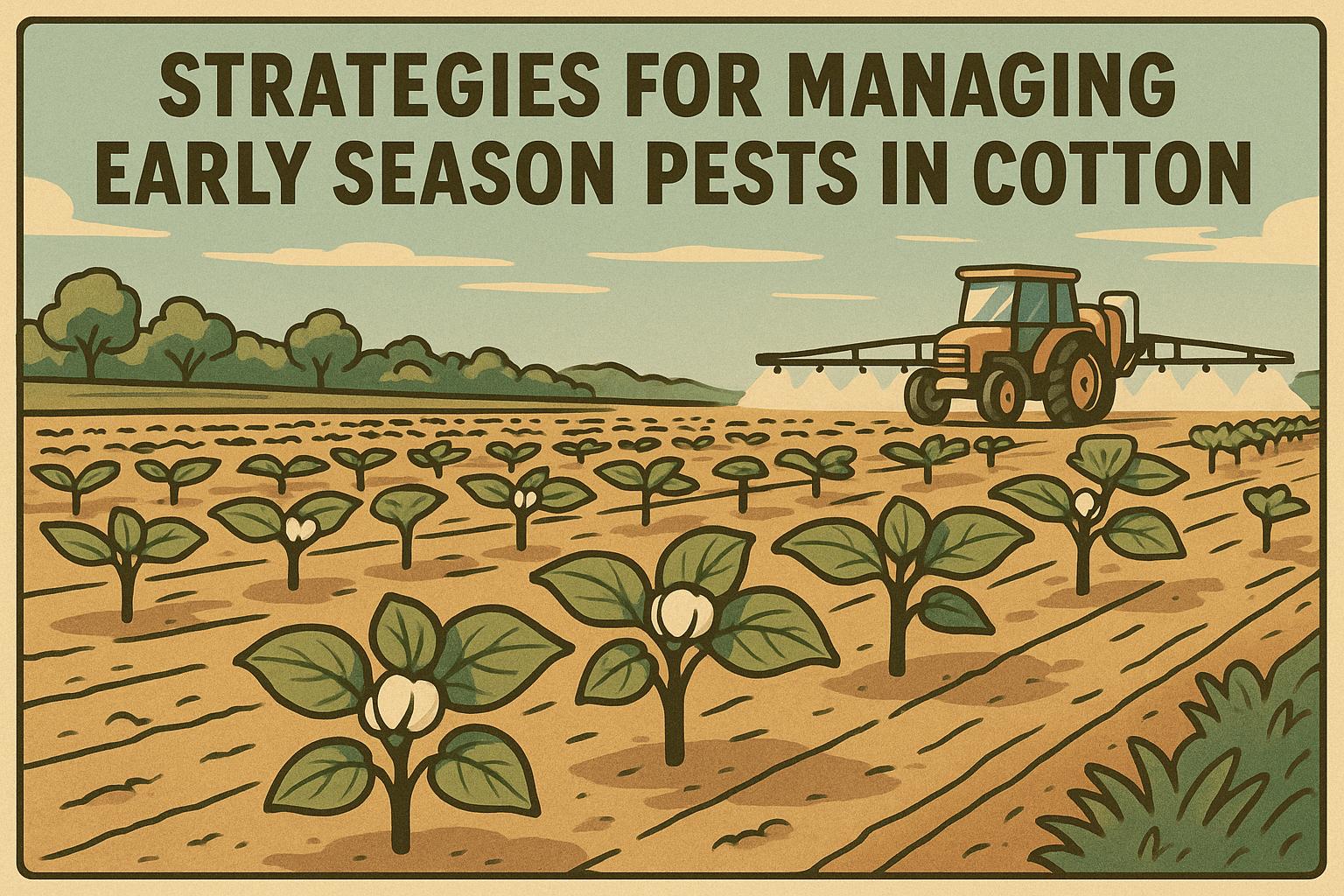Ginning plays a key role in cotton quality, directly affecting fiber strength, length, and short fiber content. Cotton strength, measured in grams per tex (g/tex), determines how well fibers resist tension during spinning and weaving. Poor ginning practices can weaken fibers, reduce length, and increase short fiber content, leading to lower-quality textiles and higher production costs.
Key Takeaways:
- Moisture Levels Matter: Cotton processed at 6%-8% moisture retains better strength and length. Low moisture (below 3%) makes fibers brittle, increasing breakage.
- Mechanical Stress: Aggressive cleaning removes debris but damages fibers, while gentle cleaning preserves quality but may leave trash.
- Short Fiber Content: Low-moisture ginning can increase short fiber content by up to 57%, reducing yarn quality.
- Optimized Ginning: Systems that control moisture and cleaning intensity improve fiber strength by up to 5% and reduce short fiber content by 47%.
Quick Comparison of Ginning Conditions:
| Condition | Pros | Cons |
|---|---|---|
| Aggressive Cleaning | Removes more debris | Damages fibers, increases breakage |
| Gentle Cleaning | Preserves fiber quality | May leave more debris |
| Low Moisture Processing | Faster, lower drying costs | Increases fiber breakage |
| Optimal Moisture Processing | Improves fiber quality | Requires monitoring and equipment |
Improving ginning practices benefits both growers and textile manufacturers, delivering stronger, longer fibers that enhance spinning performance and product durability.
Comparison of the lea strength of 24s (100%) cotton, 24s CVC (60:40), 24s PC (50:50) yarn
Factors That Affect Cotton Fiber Strength
The strength of cotton fibers is determined by a combination of biological development and environmental conditions before the ginning process begins. These factors play a critical role in shaping the cellular structure and, ultimately, the strength of the fibers.
Cotton Fiber Development and Strength
Cotton fiber strength is established during the plant's growth stages, starting from reproduction and progressing through cell differentiation to the formation of the secondary cell wall. This secondary wall, primarily made of cellulose, is the main contributor to the fiber's strength and rigidity. When the secondary wall fully develops, the fibers become tightly twisted, strong, and suitable for spinning. However, if fibers dry out prematurely - before the secondary wall is fully formed - they tend to flatten and take on a ribbon-like shape, which weakens their overall strength.
Environmental conditions during the growing season significantly influence the completeness of secondary wall development. Factors such as temperature, water availability, and nutrient levels can either support or hinder this process. Stressors like drought, poor soil nutrition, or pest infestations can lead to incomplete fiber maturation, resulting in thinner secondary walls and weaker fibers.
Fiber Properties at Harvest
By the time of harvest, the maturity of the fibers determines how well they can withstand the ginning process. Fully mature fibers - characterized by optimal length, strength, and fineness - are more resistant to breakage during ginning, which helps maintain yarn quality. On the other hand, immature or shorter fibers are more prone to breaking, leading to higher short fiber content and reduced yarn strength.
For instance, a case study showed that cotton harvested with immature fibers - often caused by early defoliation or incomplete secondary wall development - had higher short fiber content and lower yarn strength after ginning. In contrast, cotton grown under conditions that allowed for full fiber maturity produced longer, stronger fibers, which improved spinning performance and textile quality.
The relationship between fiber maturity and processing outcomes is evident in the following data:
| Moisture Content | Upper Half Mean Length | Yarn Strength (50s) |
|---|---|---|
| 6.8% | 26.4 mm (~1.04 in) | 412 N (≈ 42 lbs) |
| 3.7% | 25.4 mm (~1.00 in) | 382 N (≈ 39 lbs) |
For cotton growers and ginners, timing the harvest is critical. Experts advise waiting until most bolls have fully matured and the secondary cell wall has completed its development. Effective crop monitoring, careful use of defoliants, and proper field moisture management while minimizing stress are key practices. Once the fibers' strength is set by these developmental and harvest factors, the ginning process further impacts their quality.
How Ginning Stages Affect Fiber Strength and Length
The journey of cotton fibers from growth to finished product doesn’t end at harvest. Ginning, the process of separating cotton fibers from seeds, plays a major role in determining the final quality of the fiber. Each stage of ginning - drying, cleaning, and seed removal - can either maintain or compromise the integrity of the fibers. The mechanical nature of ginning introduces stress points where fibers can weaken, break, or lose length. By understanding how these stages interact with fiber properties, ginners can fine-tune their processes to retain as much fiber quality as possible.
Moisture Content During Ginning
Moisture levels during ginning are critical to preserving fiber quality. Cotton that’s too dry becomes brittle, making it more likely to break during mechanical processing. On the other hand, cotton with the right moisture content stays flexible, allowing the fibers to bend instead of snapping under stress.
Studies show that managing moisture effectively can improve fiber strength by 5% and cut short fiber content nearly in half (47%). Cotton entering the gin with moisture levels below 3% often requires rehydration before processing. For example, spray systems can raise moisture levels from 2.7% to 8.1%, which has been shown to increase fiber length from 26.7 mm to 27.7 mm. That extra millimeter translates to better spinning performance and higher-quality yarn.
Timing also matters. Applying moisture early in the ginning process minimizes damage caused by dry conditions, ensuring better overall fiber quality. Advanced moisture monitoring systems make it easier to maintain these optimal conditions throughout the ginning process.
But moisture isn’t the only factor. The mechanical actions during cleaning also have a significant impact on fiber integrity.
Mechanical Action and Cleaning Processes
Cleaning machines are designed to remove debris, but they also pose a risk to fiber quality. While aggressive cleaning effectively removes trash, it can damage fibers, increasing short fiber content and introducing seed coat fragments.
Cotton typically undergoes multiple cleaning stages - pre-cleaning, cylinder cleaning, and sometimes additional steps like stick machines or impact cleaners. Each stage adds mechanical stress, which can accumulate and degrade fiber quality, especially if the cotton is dry or immature.
Process control systems offer a way to balance cleaning effectiveness with fiber preservation. These systems monitor fiber conditions in real time and adjust cleaning intensity to minimize unnecessary stress. Gins using such systems have reported fiber length increases of about 4%, a 47% reduction in short fibers, and a 3% boost in fiber yield.
Comparison of Ginning Conditions
The balance between moisture and cleaning intensity is key to maintaining fiber strength and length. Different ginning conditions produce varying results, and understanding these trade-offs is essential for selecting the best approach.
| Ginning Condition | Advantages | Disadvantages |
|---|---|---|
| Aggressive Cleaning | Removes more debris, improves grade | Damages fibers, increases short fiber content |
| Gentle Cleaning | Preserves fiber length and strength | May leave more debris, potentially lowering grade |
| Low Moisture Processing | Faster processing, lower drying costs | Increases fiber breakage, raises short fiber content |
| Optimal Moisture Processing | Maintains fiber strength and length, reduces breakage | Requires additional monitoring and equipment |
The evidence suggests that optimal moisture levels paired with moderate cleaning intensity yield the best results for fiber quality. While this approach may require investment in monitoring systems and equipment, the payoff comes in the form of stronger fibers, longer lengths, and higher market prices.
For ginners looking to refine their processes, resources like cottongins.org provide valuable insights and connections to gins across the U.S. that are implementing best practices. By focusing on precision ginning techniques, the cotton industry can ensure better fiber quality and meet the demands of textile manufacturers more effectively.
sbb-itb-0e617ca
Measured Changes in Fiber Properties During Ginning
Research shows that ginning has a direct and measurable impact on cotton fiber quality. By analyzing these changes, ginners can adjust their processes to protect fiber integrity. The data highlights how shifts in fiber strength and length during ginning can influence the final textile product.
Changes in Fiber Strength
Cotton fibers lose tensile strength when processed under less-than-ideal conditions. For example, yarn strength can drop from 412 N to 382 N for 50s yarn when ginned at low moisture levels - a 7% reduction that affects the durability of the final fabric.
The connection between moisture and fiber strength is clear. For every 1% drop in fiber moisture during ginning, the yarn break factor decreases by roughly 2.6%. Cotton processed at 3% moisture produces weaker yarn compared to cotton ginned at 6% moisture.
Mechanical stress during ginning also weakens the fibers. Tasks like cleaning and seed removal create weak points that can lead to breakage during spinning and weaving. However, with proper moisture control systems in place, ginners can boost fiber strength by up to 5%, resulting in stronger and more dependable yarn.
Changes in Fiber Length and Short Fiber Content
While strength is critical, fiber length and short fiber content also play a major role in spinning performance. During ginning, fiber length often decreases, which can negatively affect textile quality. The 2.5% span length typically drops from 28.7 mm to 28.4 mm before lint cleaning, and further declines to 27.9 mm after aggressive cleaning. Although these changes might seem minor, they significantly impact spinning efficiency.
Short fiber content is another area of concern. Low-moisture ginning can increase short fiber content from 7% to 11% - a 57% jump. This rise in short fibers has a cascading effect, as each 1% increase in short fiber content leads to a 3% drop in the yarn break factor.
Historical studies, like the Cocke and Garner research from 1972, provide clear examples of these trends. Cotton ginned at 3.9% moisture had a 2.5% span length of 28.4 mm after lint cleaning, compared to 27.9 mm for cotton ginned at 5.6% moisture. Additionally, higher-moisture cotton showed 4% less short fiber content.
| Fiber Measurement | Low Moisture (3.7%) | High Moisture (6.8%) | Difference |
|---|---|---|---|
| Upper Half Mean Length | 25.4 mm | 26.4 mm | +1.0 mm |
| Suter-Webb Mean Length | 22.4 mm | 23.9 mm | +1.5 mm |
Modern moisture restoration systems offer solutions to these challenges. For instance, raising the moisture content from 2.7% to 8.1% improves the upper half mean length from 26.7 mm to 27.7 mm. This 1.0 mm improvement enhances fiber uniformity and spinning performance.
Gins equipped with computerized process controls report a 47% reduction in short fiber content and a 4% gain in fiber length. Data from cottongins.org highlights these advancements, emphasizing the importance of fine-tuning ginning processes to maintain high-quality cotton - an ongoing priority for U.S. gins.
What This Means for Cotton Ginning and Textile Industry
Research into how ginning affects fiber strength reveals a clear connection: lower-quality ginning practices increase production costs and weaken the final fabric. This highlights the pressing need to refine ginning methods for better outcomes.
Best Practices for Maintaining Fiber Strength
Cotton ginners have several effective strategies at their disposal to minimize fiber damage and maintain strength during processing. Among these, moisture control is the most critical factor. Proper humidity levels can significantly improve various quality aspects of cotton.
Keeping moisture levels between 6% and 8% enhances fiber length, reduces the occurrence of short fibers, and strengthens the cotton overall. These improvements not only elevate the quality of the cotton but also make it more valuable in the market. Better ginning practices lead directly to textiles that perform better and last longer.
Computerized controls also play a key role by enabling "prescription" ginning. This approach tailors the cleaning process to the specific needs of each batch, avoiding a one-size-fits-all method that can harm fiber quality.
Additionally, managing ginning rates and reducing the number of cleaning steps can help minimize fiber stress. While cleaning removes trash, excessive cleaning can increase fiber breakage and the amount of short fibers. The challenge is finding the right balance - removing impurities without causing undue damage. Gins that adopt moisture control and limit mechanical cleaning often report stronger yarn and fewer short fibers.
How Ginning Adjustments Improve Textile Quality
These refined practices in ginning directly benefit textile manufacturers. The link between ginning methods and the quality of the final textile product is both clear and measurable. When ginners optimize their processes, manufacturers gain stronger yarns and more durable fabrics.
The economic impact is significant. Weak fibers result in lower cotton prices, increased waste, and higher production costs for textile manufacturers due to frequent yarn breakage and less durable products. This creates financial losses for both cotton growers and textile mills, making the adoption of better ginning practices essential for staying competitive.
By optimizing equipment and maintaining strict process controls, gins can reduce fiber damage, improve yields, and support better performance at textile mills. Striking the right balance in cleaning intensity - removing as much trash as possible without excessive fiber breakage - results in cotton that spins more efficiently and produces stronger, more consistent yarns.
In the U.S., cotton gins typically conduct standardized tests for fiber length, strength, and short fiber content. Regular sampling and reporting ensure that gins meet industry benchmarks, helping them identify and address process issues early to maintain consistent quality for textile production.
Using cottongins.org as a Resource

Beyond process improvements, tools like cottongins.org serve as valuable resources for producers and manufacturers. This platform helps users locate U.S. cotton gins that prioritize fiber quality.
The website’s directory allows cotton growers to search for gins by geographic location, making it easier to find nearby facilities that understand the importance of preserving fiber strength during processing. This is especially helpful for growers looking to transport their cotton efficiently while ensuring it receives quality treatment.
cottongins.org also provides opportunities for gins to promote their commitment to quality. Through sponsored content and official sponsorships, gins can highlight their advanced systems, such as computerized controls or enhanced moisture management, to attract producers focused on quality.
Additionally, the platform offers a submission system for adding new gin entries, ensuring the directory remains up-to-date as the industry evolves. By maintaining an accurate and comprehensive view of ginning capabilities across regions, cottongins.org supports better decision-making throughout the cotton supply chain.
Conclusion: Key Points on Fiber Strength During Ginning
Research highlights how ginning plays a crucial role in determining textile quality. Factors like moisture levels and cleaning intensity significantly impact fiber properties. For example, reducing moisture from 5.6% to 3.9% decreases fiber length from 28.7 mm to 27.9 mm and lowers yarn strength from 412 N to 382 N.
Even a small increase in short fiber content - just 1% - can reduce the yarn break factor by about 2.6%. Excessive mechanical handling can further weaken fibers, making it essential to strike the right balance. The goal is to remove impurities while minimizing fiber damage, ensuring better overall quality.
To support these efforts, U.S. cotton producers and ginners have access to valuable resources like cottongins.org. This platform connects users with gins that emphasize best practices and encourages knowledge sharing within the industry. By adopting these refined techniques, producers can consistently deliver the high-quality fibers needed for top-tier textile production.
FAQs
How does moisture content during ginning impact the strength and quality of cotton fibers?
Moisture content is a key factor in the strength and quality of cotton fibers during the ginning process. When cotton is overly dry, the fibers can become brittle, increasing the likelihood of breakage and weakening their overall durability. Conversely, too much moisture causes the fibers to stick together, leading to uneven ginning and potential quality concerns.
Maintaining the right moisture level is crucial for achieving the best results. Effective moisture control during ginning helps protect fiber integrity, ensuring the cotton meets the high standards required for textile production.
How do aggressive and gentle ginning methods affect cotton fiber strength and overall quality?
The ginning process is a key factor in shaping the strength and quality of cotton fibers. While more aggressive cleaning methods are effective at removing impurities, they can also harm the fibers, resulting in weaker threads and lower-quality textiles. Conversely, gentler ginning techniques help maintain the fibers' integrity but may leave behind more debris, which could require further cleaning down the line.
Finding the right balance between thorough cleaning and preserving fiber quality is crucial to producing cotton that meets the high standards of the textile industry.
How does the development of the secondary cell wall impact cotton fiber strength, and what role do environmental factors play during growth?
The secondary cell wall plays a key role in determining the strength of cotton fibers, as it provides the structural support and resilience required for producing durable, high-quality textiles. Composed primarily of cellulose, this layer forms during the later stages of fiber growth. Its thickness and makeup are directly tied to the fiber’s ability to withstand tension.
Factors like temperature, water supply, and nutrient availability heavily influence how the secondary cell wall develops. For example, steady moisture levels and favorable temperatures encourage better cellulose buildup. On the other hand, stressors such as drought or extreme heat can disrupt this process, leading to weaker fibers. Gaining a deeper understanding of these environmental interactions is essential for cultivating cotton fibers that are consistently strong and dependable.


